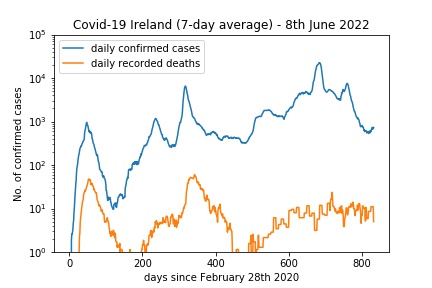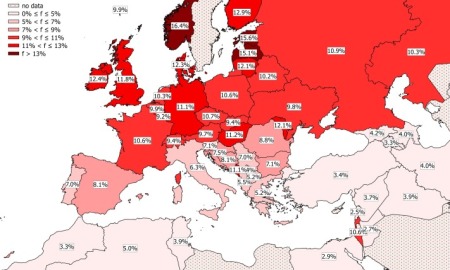
Left to Right: Omari Douglas (Roscoe), Nathaniel Curtis (Ash), Olly Alexander (Ritchie), Callum Scott Howells (Colin) and Lydia West (Jill)
Since I posted a kind of prelude a few days ago I decided that I would bite the bullet and watch the entire Channel 4 drama series It’s a Sin. Although only the first episode (of five) has been broadcast all the episodes were released on the Channel 4 app so I decided to binge on it. Part of the reason for doing that was that I wanted to finish it before term starts next week. I’ve waited for a couple of days before writing a sort of review of it, or more a reaction, really to get over the impact enough to write something even vaguely sensible.
Because a lot of people won’t have seen the whole series yet I won’t give away any of the plot, but it won’t come as any surprise to discover that it is steeped in tragedy and at times a very difficult watch. Before you ask if I cried, the answer is yes, I did a lot, in every single episode, partly because of the actual drama but also partly because of the memories it brought back. The catharsis wasn’t unwelcome, however. You don’t deal with the past by hiding from it.
The word tragedy is frequently misused but I think it is very apt for It’s A Sin. People often refer to unpredictable or accidental events as tragic but the power of a theatrical tragedy comes from the sense of remorseless inevitability. From Episode 1 you feel the threat approaching and you know what is going to happen because you know the historical context. It still hits very hard though. If you can get through Episode 3 without crumbling you’re a stronger person than me. It reminded me of a paraphrased quote from Herodotus I first heard in 1986:
Call no man happy until he knows the manner of his death.
So what can I say about it as a piece of television drama? Well, first of all, it’s beautifully written and produced. Writer Russel T. Davies is just a month or so older than me so would also have been 18 in 1981 when the first episode is set and it clearly is a very personal piece. That gives it great authenticity, and the production goes to a lot of trouble to get the atmosphere and detail right. I moved to London in 1990 and the last episode, set in 1991, depicts that time very accurately indeed. While I was living in Brighton (for the five years before moving to London) I did travel up quite a few times to sample the gay scene either alone or with friends. The music, the design and the clothing is all very much on the mark. The one thing you can’t do on television is recreate the smell. Gay clubs in my memory were awash with poppers and sweat. I had also almost forgotten the ubiquitous clones (gay men in tight jeans, checked shirts, cropped hair and moustaches), a look that was de rigueur in the late Seventies to mid Eighties. The lingo was generally quite different, actually. There weren’t any twinks in those days, for example, and far fewer gym bunnies. I also remember that for me in those days the London scene revolved more around Earls Court than Soho. I particularly remember a place called Bromptons.
But I digress.
The acting in the series is also very good. I have to pick out Olly Alexander‘s stellar performance as Ritchie Tozer. Being an old fogey I didn’t know about his musical career and I’ve only seen him a little as an actor, including in an old episode of the detective series Lewis but to be honest he didn’t really register. I was much more aware of him as an activist and advocate for LGBT+ rights, work for which I admire him enormously. The role of Ritchie is clearly one that means a lot to him and which is no doubt why he gives so much of himself. The result is one of the most generous and commited performances I have ever seen on television, as funny and charming as it is, in the end, heartbreaking. He has a presence in this series that is utterly compelling.
Among other qualities, Olly Alexander has remarkably expressive eyes. That’s always a great asset for a screen actor, because so much is done in closeup and, in this series, he does quite a lot of work directly to camera which are intensely moving. Although the whole cast is very strong – and it is really an ensemble piece – Olly Alexander steals the show more than once. He deserves every bit of the praise that is being heaped on him right now.
Russel T. Davies was very clear that he wanted the gay roles in this series to be played by gay actors. I think he was absolutely right in that, for two reasons. One is personal. I don’t think I would have responded in anything like the same way as I did to, e.g., Ritchie Tozer if I hadn’t known that the actor playing him was gay. It made the character immediately real to me. More importantly I think playing a gay role must be liberating for a gay actor too. The actor does not have to pretend to be gay so they can concentrate their energy on other aspects of their performance, which can only grow as a consequence.
I was amused to see some comments on social media after Episode 1 complaining about the “graphic” sex scenes. I think they were done very honestly, showing things as they are. HIV is sexually transmitted so why tiptoe around the reality of gay sex. I thought some of the scenes were rather nice, actually. Anyway I wonder what the people complaining think gay men do in bed, play tiddlywinks perhaps? I’ve never understood why it is acceptable to portray shocking levels of violence on television, but showing two cute guys getting it on is considered anathema. Straight people can be weird.
I suppose one of things I was a bit worried about before I watched It’s A Sin was that it might have been mawkish or preachy, a trap some AIDS dramas have fallen into. Davies avoids that by ensuring that all his characters are very human. Richie, for example, may be cute and sexy but he is also at times a bit dim and rather annoying.
The other characters are similarly human. They all have their faults, but who doesn’t? You don’t have to be an angel to deserve respect. All are very real, presumably because they are partly based on people Russell T. Davies knew back then.
I’ve described some of my own experiences during the Eighties elsewhere on this blog. I don’t propose to repeat them at length here, but will say that I grew up in the 1970s at a time when the only portrayals of gay characters on screen were camp stereotypes to be mocked. That mockery extended into everyday life for gay people, with the added possibility of real physical violence. My reaction to that was to assume that straight people would never be really accepting of us and would never be our friends, so it was a waste of time trying. When I wasn’t at work I avoided straight society, shopping in gay shops, eating in gay restaurants, and generally being a scene Queen. That may seem a bit extreme – and it probably was – but one positive I felt at the time was a sense of belonging that I had never felt before and haven’t felt much since. That sense pervades It’s A Sin: the characters suffer family rejection and discrimination as society turns its back on them but they have each other, at least for a time.
Curiously it was because I got involved a little bit in the battle against AIDS that I changed my view about gay separatism. After doing some training I got involved as a volunteer in doing sexual health workshops, phone counselling, giving out information leaflets and fundraising. As a matter of fact it was the AIDS crisis that led me to take up long-distance running. I did my first half-marathon in 1988 to raise money for the Terence Higgins Trust.
To my surprise a number of straight people were involved in these activities too, and I began to realize that there was such a thing as a a straight ally. If someone had told me in 1991 that in less than 30 years same-sex marriage would have been legal I would have laughed my head off. But there you are. We wouldn’t have got that without building alliances. I was wrong, and am happy to admit it.
One of the people I worked with at that time was a nurse called Gill. The character Jill Baxter (wonderfully played by Lydia West) made my jaw drop not just because of the similarity in name but also because some of the things she says (warning the risks from AIDS) which were almost word for word some like expressions Gill used. I’m sure* that must be a coincidence!
*I’ve now read an interview that explains that Jill is indeed based on a real character called Jill (not Gill) who was a nurse who cared for people with AIDS, as Gill did but was not her. I hope this clarifies the situation.
The hostility and misrepresentation I mentioned above got even worse during the AIDS crisis, with the occasional added flourish that AIDS was sent by God to punish sinful behaviour. The best that most dramas achieved was to create a sense that gay men were victims to be pitied, rather than perverts to be despised. That seemed to me to be hardly an improvement. At least now we’re on a path towards equality and acceptance, although there is still a long way to go: there are some who don’t seem to have learned very much at all from this terrible period, judging by their attitudes towards transgender people.
I think that’s enough rambling. I’ll just make one last admission. This series made me feel very old! The first episode is set in 1981, which is “only” forty years ago, but it struck me in Episode 2 that it was a bit like watching one of those historical costume dramas that appear so often on the telly and then realising that you were alive at the time being depicted! But I can cope with being old. At least I made it this far. This series is a testament to those who didn’t.













